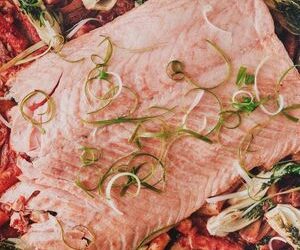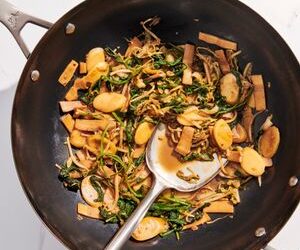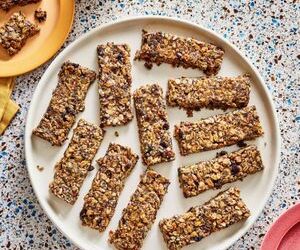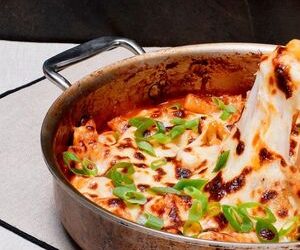Why It Works
- Toasting gives the pecans and the powdered sugar more depth of flavor.
- A food processor does the work of chopping the pecans and mixing the dough all at once.
- Smaller portions of dough have a better ratio of cookie to powdered sugar, so portion these out with a scoop or scale.
Mexican wedding cookies are as well traveled as Carmen Sandiego. In some circles, these little treats are known as “Russian tea cakes,” while in other places, they masquerade as “Danish wedding cookies.” Where I grew up, in Kentucky, they’re called “snowballs,” but down in Florida, they’re “butterballs” instead. Food historians say this culinary enigma descends from Spanish polvorónes, but the inclusion of pecans hints at a stopover in Texas.
Regardless of their true pedigree, Mexican wedding cookies are as simple as they come: roughly one part powdered sugar, two parts pecans, four parts flour, and four parts butter by weight. That high-fat/low-moisture formula gives the cookies an unusually delicate consistency, one that virtually melts on the tongue, along with a strong, pecan-forward flavor.
Serious Eats / Vicky Wasik
Meanwhile, the choice of powdered sugar gives the dough an especially light texture without the need for any creaming—a technique that’s meant to aerate doughs made dense by granulated sugar.
Due to their simplicity, great Mexican wedding cookies hinge on the quality of the ingredients. I mean, they’re A-OK with run-of-the-mill stuff from the supermarket, and I’d never suggest that anyone delay an impending bake-a-thon to pick up specialty products, but with two strategic upgrades, Mexican wedding cookies can be absolutely phenomenal. The tricks? Fresh pecans and organic powdered sugar.
Serious Eats / Vicky Wasik
Fresh Pecans Make a Difference
I’m lucky enough to live in a part of the world where it’s easy to score wild pecans, super sweet and buttery even when raw. For most folks, it’s probably easier to order fresh pecans online (I recommend The Pecan Shop, out of Texas). If that’s not doable, it’s worth making sure the bag of pecans you buy at the supermarket isn’t edging toward its expiration date, since older pecans can be unpleasantly bitter. If there’s a plastic window on the bag, check that the pecans look nice and plump, and try to avoid those that look shriveled.
Organic Sugar Is Key to a Richer Flavor
Organic powdered sugar is an ingredient I’ve praised a time or two before—not because it’s organic, but because organic brands are the only ones that start with raw cane sugar, which retains a portion of its natural molasses content. That gives it a rich and butterscotch-y flavor, improving almost any recipe that relies heavily on powdered sugar.
Serious Eats / Vicky Wasik
Toast the Pecans and Sugar First
Both ingredients will benefit from a few minutes in the oven, which crisps up the pecans and lightly toasts the sugar for enhanced flavor. I like to do this in a skillet because it’s just the right size for this recipe, and its shape will come in handy later on (trust me). If you happen to have toasted pecans on hand already, it’s okay to skip toasting the powdered sugar; I don’t feel the slight boost in flavor is worth the inconvenience, though it’s a nice touch if you’re toasting the pecans anyway. This takes about 12 to 15 minutes in a 350°F (180°C) oven, depending on how accurate it runs, or just until the pecans are fragrant. If they’re too dark, the pecans can make the cookies astringent and dry as they continue to cook in the oven.
Making the Cookie Dough
Whatever you do, give the pecans and powdered sugar time to cool, or else the residual warmth can soften the butter and turn the dough into a sticky mess. But once the toasting and cooling phases are complete, Mexican wedding cookies come together lightning-fast if you have a food processor: Just toss everything in the bowl, pulse until it starts to form a ball, and you’re done.
If you don’t have a food processor, you’ll need to finely chop the pecans before getting started, then blend the butter into the dry ingredients by hand (or with a mixer). This will require slightly softened butter, so the resulting dough should be refrigerated until it’s no longer sticky, ensuring that it’s easier to handle and the cookies don’t spread too thin.
Forming and Baking the Cookies
Scoop the cool dough into about 20 portions; if you don’t have an appropriately small cookie scoop, aim for half-ounce (14-gram) portions on a scale. Drop each into a bed of powdered sugar as you go—this is where that ol’ skillet comes in. Not only does reusing the skillet streamline your cleanup, its shape will make it even easier to coat the dough. Once the dough is portioned, roll each piece into a ball, and sprinkle with more powdered sugar.
Shake and “jump” the skillet as if you were sautéing something, and the rounded portions will roll and tumble around like marbles, picking up an even thicker layer of powdered sugar. Since there’s not a ton of sugar in the dough, that’s a major boost to the flavor overall.
Serious Eats / Vicky Wasik
Arrange the cookie dough on a parchment-lined half sheet pan, and bake until the cookies are puffed and firm, about 18 minutes. Since the powdered sugar is absorbed by the dough as it bakes, the cookies will have a sweet but rather rustic-looking exterior.
Serious Eats / Vicky Wasik
For that reason, I like to finish them with a dusting of powdered sugar for show. If this is done while the cookies are still hot from the oven, steam will partially dissolve the powdered sugar, helping it to stick. That means you can inhale these meltingly tender pecan shortbreads without inhaling the sugar itself.
While Mexican wedding cookies will keep for nearly a month in an airtight container, do keep a close eye on them—like Carmen Sandiego, they tend to disappear.





